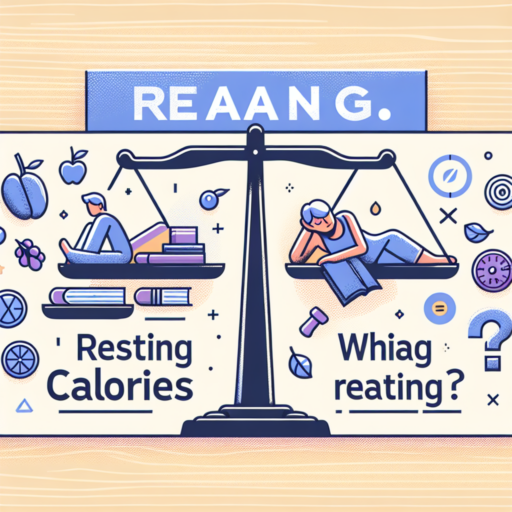How is heart rate reserve calculated?
Calculating your heart rate reserve (HRR) is a crucial step in understanding your physical fitness level and setting effective training intensities. The formula to determine your HRR involves two key numbers: Your Maximum Heart Rate (MHR) and your Resting Heart Rate (RHR). The basic equation used is HRR = MHR – RHR. To accurately calculate these components, let’s delve deeper into each element.
Step 1: Determining Your Maximum Heart Rate (MHR)
The most common method to estimate your MHR is by subtracting your age from 220. For example, if you are 30 years old, your estimated MHR would be 190 beats per minute (bpm). It’s important to note that this method provides an approximation, and individual maximum heart rates can vary.
Step 2: Identifying Your Resting Heart Rate (RHR)
Your RHR is the number of times your heart beats per minute while at complete rest. It’s best to measure this immediately after waking up in the morning, preferably without an alarm, for the most accurate reading. The average RHR for adults ranges from 60 to 100 bpm, though athletes often have lower rates.
Once you have both your MHR and RHR figures, you can apply them to the HRR formula HRR = MHR – RHR. This calculation gives you a personal heart rate zone, indicating the range your heart rate should be in to achieve varying exercise intensities. Understanding your HRR is essential for tailored workout plans, ensuring you train efficiently without overexerting your heart.
How do you use the heart rate reserve method for determining?
Using the Heart Rate Reserve (HRR) method is an effective way to determine your exercise intensity based on the difference between your maximum heart rate (HRmax) and your resting heart rate (RHR). This approach allows for a more personalized exercise regimen, ensuring you exercise within a safe and effective heart rate zone.
Steps to Calculate Your Heart Rate Reserve
- Find your resting heart rate (RHR): Measure your pulse after waking up in the morning before getting out of bed. Do this for several days to get an accurate average.
- Determine your maximum heart rate (HRmax): A common formula is 220 minus your age. However, this can vary based on fitness level, gender, and overall health.
- Calculate your HRR: Subtract your RHR from your HRmax. This number represents your heart rate reserve.
To effectively use the HRR method for determining your workout intensity, you’ll align your exercise goals with specific percentages of your HRR. For instance, to target a moderate intensity level, you might aim for 50-70% of your HRR during exercise. This calculated range ensures you are working within your optimal heart rate zone, promoting cardiovascular health and efficient calorie burn without overexertion.
Understanding and applying the HRR method can significantly enhance your exercise routine by tailoring intensity levels to your body’s unique requirements. This personalized approach helps in achieving fitness goals safely and effectively, whether you’re embarking on a new fitness journey or looking to optimize your current regimen.
What is the HHR method?
The HHR method, standing for Holistic Health and Recovery, is an innovative approach aimed at enhancing overall wellness by integrating physical, mental, and emotional health strategies. This method leverages a comprehensive framework, focusing on healing the individual as a whole rather than treating isolated symptoms or conditions.
Core Principles of the HHR Method
- Interconnectedness of body and mind
- Personalized care and treatment plans
- Empowerment through education and support
At the heart of the HHR method is the belief that true recovery and health transcend mere symptom management. It emphasizes the importance of understanding the root causes of health challenges and addressing them through customized treatment plans. This method promotes a synergistic approach, combining conventional medical treatments with alternative therapies to achieve optimal health.
Furthermore, the HHR method advocates for patient empowerment, providing individuals with the knowledge and tools necessary to make informed decisions about their health journey. This holistic approach not only seeks to restore health but also aims to transform lifestyles, encouraging practices that support long-term wellness and vitality.
What is the heart rate reserve method on the Apple Watch?
The heart rate reserve method on the Apple Watch leverages a vital concept in cardiovascular fitness and exercise prescription. It is essentially a technique used to calculate the difference between your maximum heart rate and your resting heart rate. This calculation offers tailored insights into optimal exercise zones, aiming to help users achieve their fitness goals more safely and effectively. Employing the heart rate reserve (HRR) method allows the Apple Watch to suggest personalized workout intensities based on an individual’s unique cardiovascular capabilities.
Using the HRR Method: To effectively employ the heart rate reserve method on the Apple Watch, the device initially establishes your resting heart rate through regular monitoring, especially when you’re at rest or asleep. Following this, it estimates your maximum heart rate, typically using age-based standard equations unless a user has undergone clinical testing to determine precise values. The heart rate reserve is then calculated by subtracting your resting heart rate from your maximum heart rate. This figure informs the customized intensity levels for various workout types that the watch recommends.
Diving deeper, the Apple Watch utilizes the heart rate reserve method to segment intensity levels into zones. These zones range from light to very vigorous exercise, guiding users to target specific heart rate zones for exercise efficiency, improvement in fitness levels, or even weight loss. This zoning brings a level of precision to workout planning, highlighting the sophisticated integration of health science and technology by Apple.










